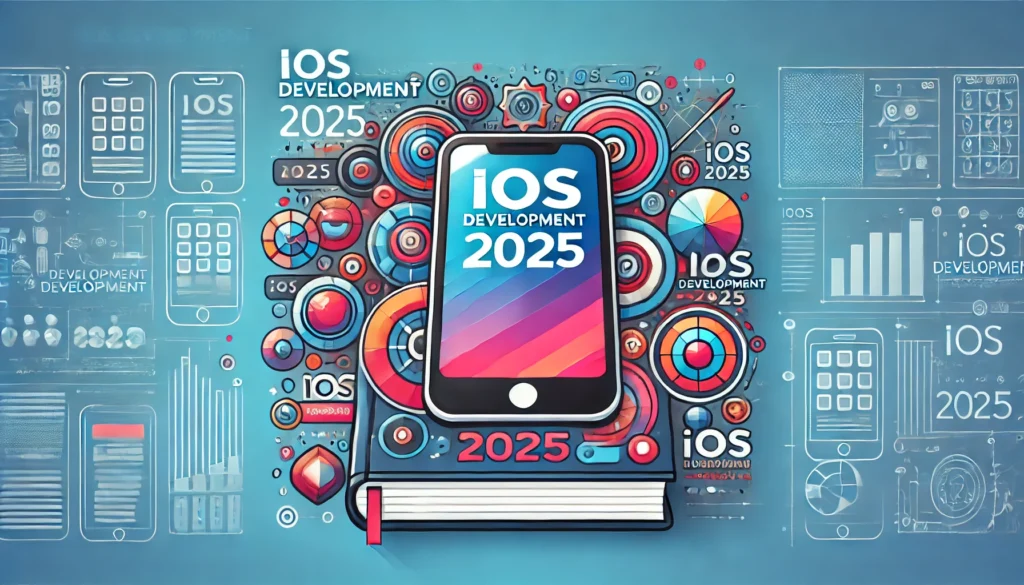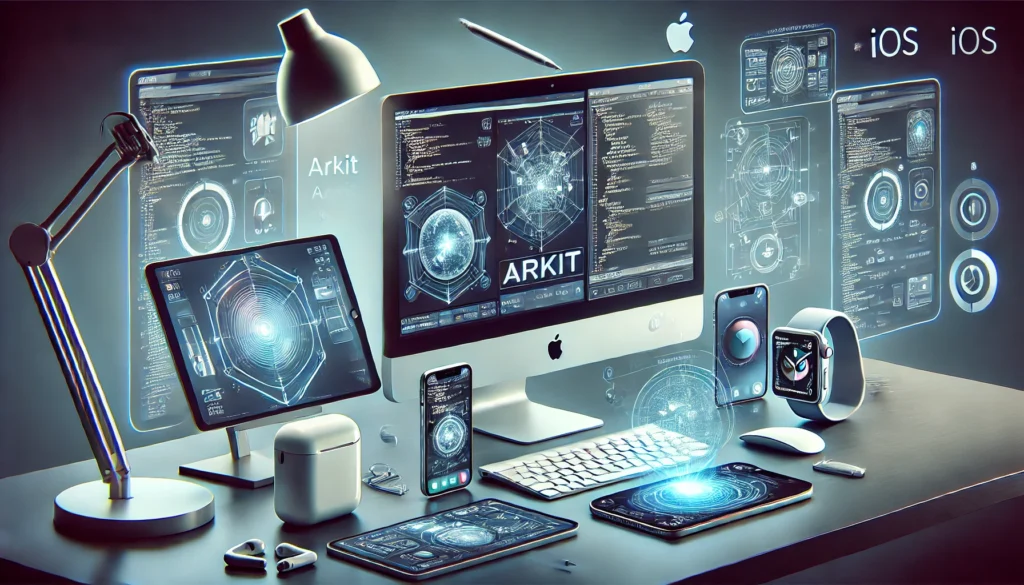Introduction
iOS development has transformed how we engage with technology, enabling millions of apps that impact our everyday lives. The iOS ecosystem gives developers and consumers countless opportunities, from productivity applications to engaging gaming experiences.
Why, then, is iOS software so appealing? With Apple’s strong ecosystem, cutting-edge technology, and emphasis on user experience, iOS developers can produce applications that make an effect and are accessible to a worldwide user base.
In this post, we’ll explore the world of iOS development, looking at tools, frameworks, obstacles, and emerging trends. This tutorial will provide you with all the information you need to begin developing iOS apps, regardless of your level of experience.

What is iOS Development?
iOS development refers to the process of producing mobile applications for Apple devices such as iPhones, iPads, and iPods. Apps are often created in Swift, a contemporary and sophisticated programming language, or Objective-C, which served as Apple’s core language for decades.
In addition to other technologies like Cocoa Touch and SwiftUI, the development process makes use of Xcode, Apple’s integrated development environment (IDE).
Why Opt for iOS Development?
Huge Reach: More than 1.5 billion active smartphones globally are powered by iOS.
High Cash Potential: The Apple App Store produces more cash than other platforms, making it a beneficial choice for enterprises.
Seamless Ecosystem: iOS apps work seamlessly with Apple devices, providing an excellent user experience.

Crucial Instruments and Technologies
The Core of iOS Development: Xcode
- Apple’s official IDE for iOS development is called Xcode.
- Among the features it provides are:
- a strong code editor.
- integrated tools for debugging.
- simulators for virtual device app testing.
- Among the features it provides are:
- Tools for creating storyboards for visual user interface design.
- Swift: The Language of Choice
- Swift is made to be quick, safe, and simple to use. Because of its efficiency and contemporary syntax, it is perfect for creating scalable applications.
- Additional Crucial Frameworks
- SwiftUI is a declarative framework for creating user interfaces with minimum code.
- Core Data: Effectively handles app data.
- Augmented reality experiences are made possible with ARKit.
- CoreML: Makes integrating machine learning models easier.
iOS Development Lifecycle
- Planning & Research
- Determine your app’s purpose and intended audience.
- Investigate rivals to identify a differentiator.
- Create
- Utilize programs such as Adobe XD or Figma to create prototypes and wireframes.
- Use SwiftUI or UIKit to create amazing interfaces.
- Progress
- Write reusable, tidy code in Objective-C or Swift.
- Use APIs and frameworks to implement functionality.
- Examining
- For unit testing, use XCTest.
- TestFlight allows you to beta test your app and get user feedback.
- Deployment
- Your software should be submitted to the Apple App Store.
- Add eye-catching images, videos, and descriptions to your app listing to maximize its exposure.
- Maintenence
- Update your app frequently to ensure it works with the latest iOS versions.
- Bug fixes and new features are added in response to user input.
Difficulties in Developing iOS
Tight App Store Policies
Apple has strict guidelines for submitting apps. Failure to comply may result in rejection; thus, developers must adhere to requirements such as privacy regulations, content limitations, and design principles.
Device Disintegration
Although less fragmented than Android, iOS still demands developers to address a variety of screen sizes, resolutions, and device features.
Curve of Learning
Despite its ease of use, Swift necessitates a firm grasp of programming principles. Learning Apple frameworks like Core Data and ARKit might also take time.

Trends in iOS Development: Augmented Reality and ARKit
Apple’s ARKit has enabled immersive AR applications ranging from virtual retail apps to educational tools. Developers use this technology to build dynamic and engaging applications.
AI & Machine Learning
CoreML enables developers to implement AI capabilities such as picture recognition, predictive text, and voice commands. Users are increasingly expecting AI-powered apps.
Development Across Platforms
SwiftUI allows developers to create apps that function flawlessly across iOS, macOS, and other Apple platforms, decreasing development time and costs.
Applications for Wearable Technology
As the Apple Watch becomes more popular, the number of applications built expressly for wearables increases, notably in health and fitness.
Best Practices in iOS Development
The best practices in iOS development could be:
- Write Clean Code.
- Adhere to standard naming practices.
- Steer clear of superfluous complications.
- Pay Attention to Performance
- Optimize the use of RAM.
- Reduce the number of API requests to guarantee quicker load times.
- Give accessibility first priority.
- Make sure your software is usable for people with impairments.
- Use VoiceOver and dynamic text scaling to increase accessibility.
- Conduct a thorough test.
- To identify issues, run both manual and automated tests.
- To evaluate usability and performance, test on actual devices.
The Future of iOS Development.
As Apple continues to innovate, the future of iOS programming is bright.
- Advanced AI capabilities include closer connections with Siri and CoreML for smarter apps.
- Additional Focus on Privacy: Apple’s dedication to customer privacy will encourage developers to utilize safer techniques.
- Enhanced Developer Tools: Features such as Xcode Cloud will make collaboration and deployment easier.
In conclusion
There is a lot of room for invention in the fascinating and fulfilling realm of iOS development. Developers may produce apps that leave a lasting impression on users by becoming proficient with the tools, adopting best practices, and keeping up with new developments. Whether you’re building your first app or looking into sophisticated features, the iOS ecosystem provides limitless opportunities to bring your ideas to life.




